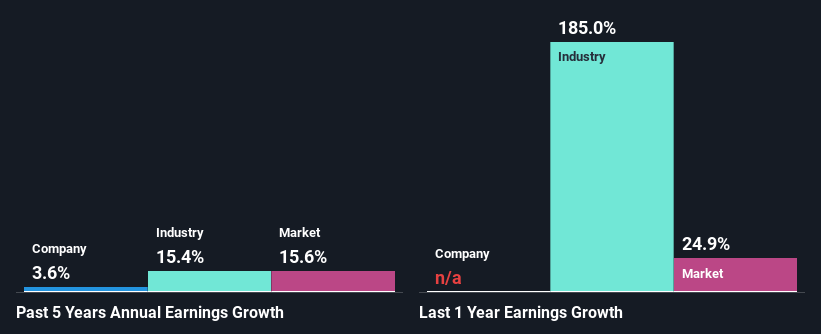Do Its Financials Have Any Role To Play In Driving Southern Energy Corp.'s (CVE:SOU) Stock Up Recently?
Southern Energy (CVE:SOU) has had a great run on the share market with its stock up by a significant 148% over the last three months. As most would know, fundamentals are what usually guide market price movements over the long-term, so we decided to look at the company's key financial indicators today to determine if they have any role to play in the recent price movement. Specifically, we decided to study Southern Energy's ROE in this article.
Return on equity or ROE is an important factor to be considered by a shareholder because it tells them how effectively their capital is being reinvested. In short, ROE shows the profit each dollar generates with respect to its shareholder investments.
Check out our latest analysis for Southern Energy
How To Calculate Return On Equity?
Return on equity can be calculated by using the formula:
Return on Equity = Net Profit (from continuing operations) ÷ Shareholders' Equity
So, based on the above formula, the ROE for Southern Energy is:
42% = US$10m ÷ US$24m (Based on the trailing twelve months to December 2021).
The 'return' is the yearly profit. One way to conceptualize this is that for each CA$1 of shareholders' capital it has, the company made CA$0.42 in profit.
What Has ROE Got To Do With Earnings Growth?
Thus far, we have learned that ROE measures how efficiently a company is generating its profits. Based on how much of its profits the company chooses to reinvest or "retain", we are then able to evaluate a company's future ability to generate profits. Assuming everything else remains unchanged, the higher the ROE and profit retention, the higher the growth rate of a company compared to companies that don't necessarily bear these characteristics.
A Side By Side comparison of Southern Energy's Earnings Growth And 42% ROE
Firstly, we acknowledge that Southern Energy has a significantly high ROE. Secondly, even when compared to the industry average of 23% the company's ROE is quite impressive. Yet, Southern Energy has posted measly growth of 3.6% over the past five years. This is generally not the case as when a company has a high rate of return it should usually also have a high earnings growth rate. Such a scenario is likely to take place when a company pays out a huge portion of its earnings as dividends, or is faced with competitive pressures.
As a next step, we compared Southern Energy's net income growth with the industry and were disappointed to see that the company's growth is lower than the industry average growth of 15% in the same period.
The basis for attaching value to a company is, to a great extent, tied to its earnings growth. It’s important for an investor to know whether the market has priced in the company's expected earnings growth (or decline). By doing so, they will have an idea if the stock is headed into clear blue waters or if swampy waters await. What is SOU worth today? The intrinsic value infographic in our free research report helps visualize whether SOU is currently mispriced by the market.
Is Southern Energy Efficiently Re-investing Its Profits?
Southern Energy doesn't pay any dividend currently which essentially means that it has been reinvesting all of its profits into the business. However, there's only been very little earnings growth to show for it. Therefore, there might be some other reasons to explain the lack in that respect. For example, the business could be in decline.
Conclusion
On the whole, we do feel that Southern Energy has some positive attributes. Although, we are disappointed to see a lack of growth in earnings even in spite of a high ROE and and a high reinvestment rate. We believe that there might be some outside factors that could be having a negative impact on the business. That being so, according to the latest industry analyst forecasts, the company's earnings are expected to shrink in the future. Are these analysts expectations based on the broad expectations for the industry, or on the company's fundamentals? Click here to be taken to our analyst's forecasts page for the company.
Have feedback on this article? Concerned about the content? Get in touch with us directly. Alternatively, email editorial-team (at) simplywallst.com.
This article by Simply Wall St is general in nature. We provide commentary based on historical data and analyst forecasts only using an unbiased methodology and our articles are not intended to be financial advice. It does not constitute a recommendation to buy or sell any stock, and does not take account of your objectives, or your financial situation. We aim to bring you long-term focused analysis driven by fundamental data. Note that our analysis may not factor in the latest price-sensitive company announcements or qualitative material. Simply Wall St has no position in any stocks mentioned.

 Yahoo Finance
Yahoo Finance 
